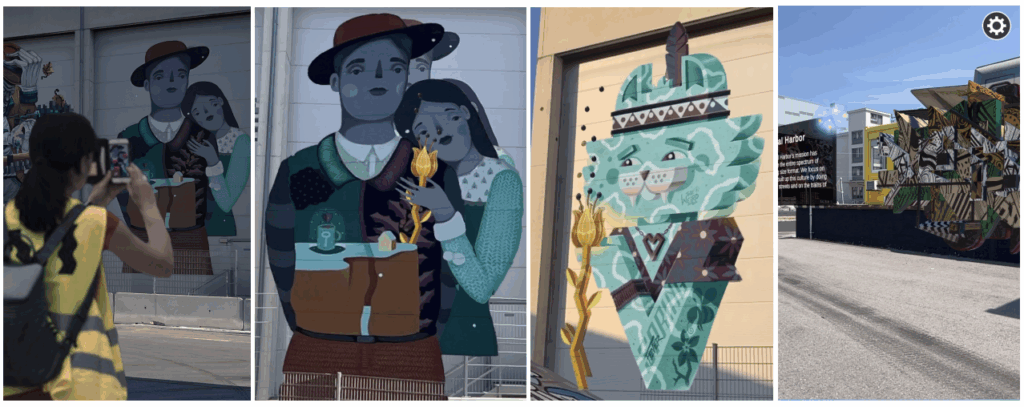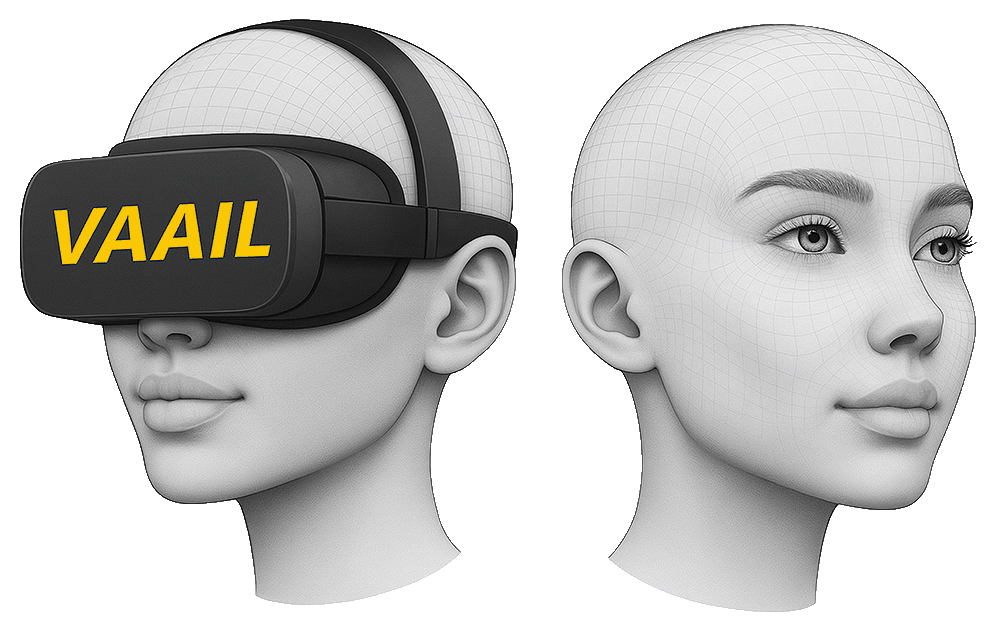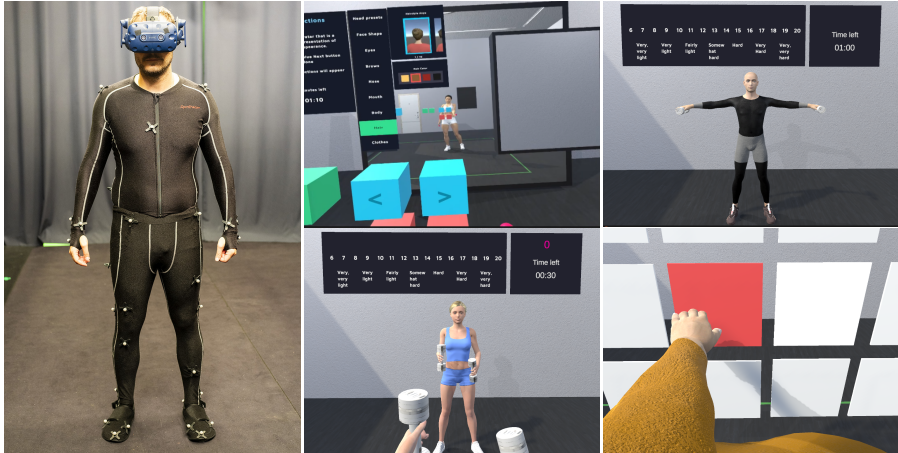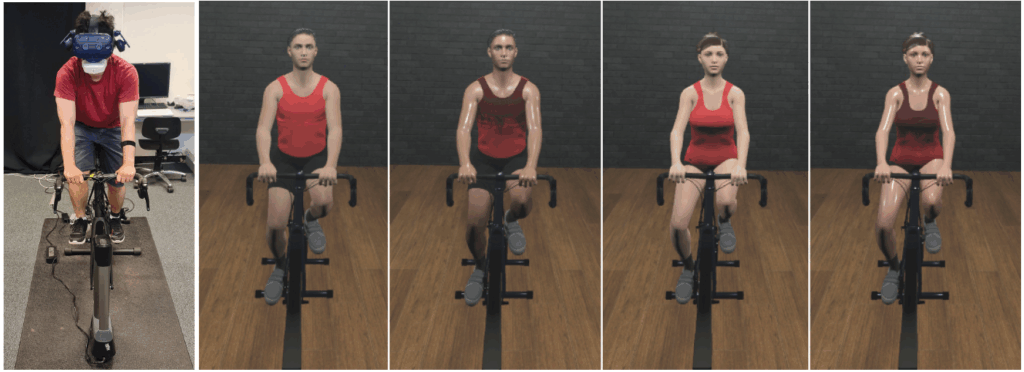At the VAAIL, situated within the Department of Psychology at the University of Central Florida, we bring together psychologists, human–computer interaction researchers, and virtual reality enthusiasts to explore the future of immersive technologies. Our work focuses on designing and evaluating innovative virtual and augmented reality applications through a human-centered lens. By studying how people experience and interact with immersive environments, we aim to uncover principles that guide the development of effective, engaging, and meaningful virtual experiences. The list below includes all publications from 2025 onward. To see a list with all accepted publications prior to 2025, visit this Google Scholar profile.
Abstract: Virtual reality (VR) allows to embody avatars. Coined the Proteus effect, an avatar’s visual appearance can influence users’ behavior and perception. Recent work suggests that athletic avatars decrease perceptual and physiological responses during VR exercise. However, such effects can fail to occur when users do not experience avatar ownership and identification. While customized avatars increase body ownership and identification, it is unclear whether they improve the Proteus effect. We conducted a study with 24 participants to determine the effects of athletic and non-athletic avatars that were either customized or randomly assigned. We developed a customization editor to allow creating customized avatars. We found that customized avatars reduced perceived exertion. We also found that athletic avatars decreased heart rate while holding weights, however, only when being customized. Results indicate that customized avatars can positively influence users during physical exertion. We discuss the utilization of avatar customization in VR exercise systems.
Abstract: Navigating is essential in many video games. However, previous work suggests that many games still suffer from navigational problems that decrease enjoyment. In this paper, we focus on “Desire Paths”, informal trails collectively created by pedestrians representing the most convenient route. While they are known to be useful wayfinding aids, it is unclear how they affect navigation and experience in games. We therefore investigated diegetically visualized player trajectory data in a 2D game through virtual footprints that were persistently visible for all subsequent players. Through a mixed-methods study involving 50 participants, we found that virtual footprints improved navigation by guiding players to points of interest and reducing disorientation for early players. However, visual clutter from excessive footprints reduced their effectiveness in later stages. They also fostered a sense of community, especially for late-stage players and prompted exploration of yet undiscovered areas. We further discuss design implications and future research directions.

VRST 2025 – Original Research Article
Effects of Embodying Emotional Avatars on Thermophysiological Responses and Affective State in Virtual Reality
Daniel Leichinger, Valentin Schwind, Niels Henze, Martin Kocur
Video
Abstract: Designers of virtual characters use facial expressions to display avatar emotions. Previous work revealed connections between emotions and thermoregulatory, e.g., happiness increases and sadness decreases skin temperature. As virtual reality (VR) enables embodying avatars with any facial expression, it is unclear whether embodying avatars with different emotions also affect users’ thermophysiological and emotional responses. We conducted a study with 24 participants who embodied customized avatars displaying happy, neutral, and sad facial expressions in VR. We found that participants’ skin temperature was higher with sad avatars than with happy ones while resting. Despite non-significant pairwise comparisons, descriptive statistics suggest an opposite trend for skin temperature responses during grabbing interactions. We also show that participants felt happier while embodying happy avatars compared to sad avatars. Results indicate that avatars’ emotions impact users’ thermoregulation and affective states. We discuss underlying mechanisms and potential applications.

VRST 2025 – Original Research Article
Investigating How to Control Virtual Spiders While Embodying Them in Virtual Reality
Philipp Thayer, Martin Kocur
Abstract: Virtual Reality (VR) enables users to embody avatars with vastly different appearances and anatomies. Embodying virtual spiders with their alien morphology could offer exciting experiences for immersive VR in gaming or education. While prior research has explored embodiment of human-like avatars and even non-human forms such as animals, it still remains unclear how best to control anatomically distinct avatars such as spiders. In this study, we systematically compared four control methods – standard VR controller, hand control, half-body control, and full-body control – while embodying a spider in VR. Using a repeated-measures design with 20 participants, we assessed each control method in terms of embodiment, usability, and perceived exertion. Results indicate that half-body control offered the best overall balance, with the highest usability and lowest exertion, while still maintaining a comparable level of embodiment to other methods. Full-body control was rated significantly lower in usability and higher in perceived exertion. These findings suggest that half-body control may provide a good balance between realism and usability for embodying spiders in VR.

MUM 2025 – Original Research Article
Sustained Effects of Avatars on Skin Temperature and Thermal
Sensation in Virtual Reality
Elisa Valetta, Anna-Lena Babl, Emma Sophie Reichert, Michael Pickl, Valentin Schwind, Martin Kocur, Niels Henze
Abstract: Perceived temperature and thermoregulation are not only influenced by actual temperature but also by visual perception. For instance, the hue-heat hypothesis posits that warm-colored lighting can increase perceived temperature. Recent work indicates that embodying avatars with visual cues suggesting extreme temperatures influences thermal perception and thermoregulation. However, recent work is limited by short exposure times, inconsistent temperature effects, and the absence of a baseline comparison. Thus, we conducted a study where participants embodied ice, neutral, and fire hands in virtual reality for 15 minutes. We show that thermal sensation is significantly higher with fire hands compared to ice hands, but found no consistent effects on skin temperature. As the effects on thermal sensation remain consistent at least over 15 minutes, we conclude that avatars’ appearance can be used to systematically influence users’ thermal perception.

VINCI 2025 – Art Paper
Interactive Augmented Reality Experiences for Urban Art Spaces
Using Markerless Tracking
Axel Bauer, Juergen Hagler, Martin Kocur
Abstract: Outdoor art exhibitions are increasingly popular spaces for people to connect with art. With the rapid advancements in augmented reality and mixed reality, immersive technologies and digital augmentations are transforming how people experience art by incorporating animations and interactive elements. However, though commonly used, marker-based augmented reality approaches present limitations in large outdoor exhibitions, including tedious setups and restricted exploration freedom for users. To address these challenges, we present a markerless mobile AR application utilizing Geospatial tracking to augment murals and playfully enhance outdoor art exhibitions with dynamic animations and interactive features that target the space between exhibits. In this paper, we describe the development of the mobile AR application and explore various interaction concepts in a qualitative in-situ study with 10 participants. Findings demonstrate how our application can be utilized to create innovative, user-centered experiences in outdoor art settings.
Abstract: Virtual reality (VR) enables users to experience avatars as their own body. Avatars can induce the Proteus effect — a shift in behavior and perception conforming to the avatar’s appearance. Previous work found that sweaty avatars can reduce the perceived exertion while cycling in VR. However, it is unknown if the effects of sweaty avatars depend on the cycling intensity and if they can also influence physiological responses. Hence, we conducted a study to investigate the effects of sweaty avatars on breathing responses and perception of effort while cycling at low and high intensities. We found that participants’ oxygen consumption and perception of effort was only influenced by the sweaty appearance of the avatar during low-intensity cycling. Results suggest that an avatar’s sweaty appearance can influence breathing and perceptual responses, however, only during low-intensity workloads. Our work contributes to the Proteus effect on physiological and perceptual responses in VR.

VRST 2025 – Poster
Effects of Rendering a Virtual Nose on Odor Perception and
Presence in Mixed Reality
Lisa Reichl, Martin Kocur
Abstract: Cybersickness remains a persistent challenge in immersive media. Prior work suggests that rendering a virtual nose can reduce cybersickness by providing a stable visual reference. However, if it introduces unwanted perceptual side effects such as changing odor perception or reducing the sense of presence is currently unknown. We conducted a study with 22 participants to examine whether a virtual nose influences odor perception or sense of presence in mixed reality. Except for perceived familiarity of the odor, results provide moderate evidence that rendering a virtual nose does not differ from not rendering one. This indicates that a virtual nose does not significantly influence presence and odor sensitivity. However, future work should further explore how a virtual nose influences perceived familiarity of odors to learn more about perceptual side effects.



